Modular design and high flexibility of application areas
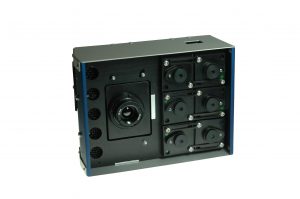 On the one hand, the number of channels that is recorded can be selected and changed by the customer. On the other hand, the systems have a high flexibility in spectral sensitivity due to their architecture. In addition to the monochrome sensors (380 – 1000 nm) installed in the μMCA, there is also the possibility to use sensors outside this sensitivity.
On the one hand, the number of channels that is recorded can be selected and changed by the customer. On the other hand, the systems have a high flexibility in spectral sensitivity due to their architecture. In addition to the monochrome sensors (380 – 1000 nm) installed in the μMCA, there is also the possibility to use sensors outside this sensitivity.
Tetracam µMCA + FLIR Tau 2
With the TETRACAM μMCA + FLIR, it is possible to expand the μMCA 6 Snap by a FLIR Tau 2 sensor. Thus an image of the FLIR Tau 2 is recorded and stored synchronously with the six images of the μMCA. The result is a co-registered bundle of images by the μMCA 6 Snap and the FLIR Tau 2 sensor. The FLIR Tau 2 IR sensor also is available in two different models with varying resolution.
Here you can find the latest firmware for your TETRACAM μMCA + FLIR Tau 2.
Performance features
— TETRACAM μMCA 6 Snap, 6 x 1.3 Megapixel CMOS Sensor (1280 x 1024 pixels) – Global Shutter + FLIR Tau2 (640 x 512 or 336 x 256 pixels)
— Large data storage: 7 x 16 GB MicroSD
— MultilayerTiff μMCA 6 Snap + FLIR Tau 2
— Small dimensions: μMCA6 + FLIR: 115.6 x 155 x 68.1 mm
— Low weight: μMCA6 + FLIR: 850g
Tetracam µMCA RGB / UV
The standard configuration of a μMCA 6 Snap consists of six monochrome sensors with the sensitivity between 450 – 950 nm. In this spectral range, the user can arbitrarily select and change the filter assignment. Beside these standard sensors, it is also possible to replace one of the sensors with an RGB or UV sensor.
Performance features
— TETRACAM μMCA 6 Snap (UV / RGB), 6 x 1.3 Megapixel CMOS Sensor (1280 x 1024 pixels) – Global Shutter
— RGB Sensor: 1.3 MPix, Global Shutter
— UV Sensor: 1.3 MPix, Global Shutter (380-10 nm or 400-40 nm)
— Large data storage: 6 x 16 GB MicroSD (expandable)
— Connection to TETRACAM u-ILS, UAV Autopilot, external GPS
— Small dimensions: μMCA6 (UV / RGB): 115.6 x 80 x 68.1 mm
— Low weight: µMCA RGB / UV: 530 g
Data sheet

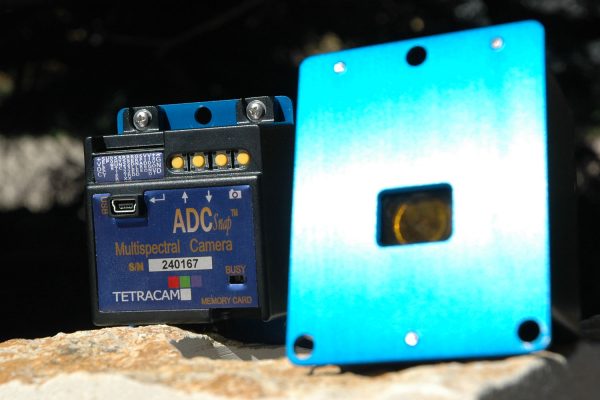
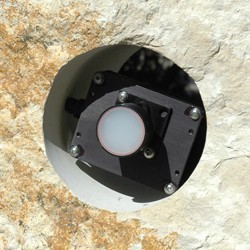
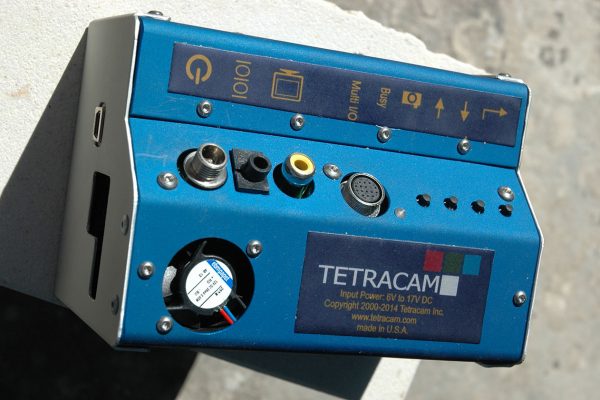
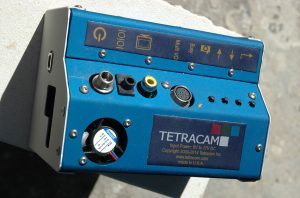 The TETRACAM μMCA (micro multiple camera array) camera models replace the reliable former MiniMCA series. With the new μMCA models, you can create multispectral images of your crop area quickly, flexibly and cost-effectively as customary. With false color information from up to 12 channels, reliable yield forecasts and vegetation controls can be carried out. Multispectral surveys therefore are a valuable tool for cost-benefit analyses and make management decisions easier – at an unreached price-performance ratio!
The TETRACAM μMCA (micro multiple camera array) camera models replace the reliable former MiniMCA series. With the new μMCA models, you can create multispectral images of your crop area quickly, flexibly and cost-effectively as customary. With false color information from up to 12 channels, reliable yield forecasts and vegetation controls can be carried out. Multispectral surveys therefore are a valuable tool for cost-benefit analyses and make management decisions easier – at an unreached price-performance ratio! On the one hand, the number of channels that is recorded can be selected and changed by the customer. On the other hand, the systems have a high flexibility in spectral sensitivity due to their architecture. In addition to the monochrome sensors (380 – 1000 nm) installed in the μMCA, there is also the possibility to use sensors outside this sensitivity.
On the one hand, the number of channels that is recorded can be selected and changed by the customer. On the other hand, the systems have a high flexibility in spectral sensitivity due to their architecture. In addition to the monochrome sensors (380 – 1000 nm) installed in the μMCA, there is also the possibility to use sensors outside this sensitivity.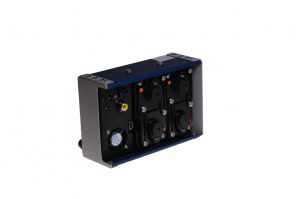
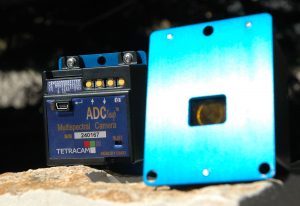 The TETRACAM ADC (Agricultural Digital Camera) is a digital camera with a sensor designed for wavelengths over 520 nm and near infrared (NIR) up to 920 nm. The bandwidths in the red, green and NIR range correspond to the TM2, TM3 and TM4 bands of the Landsat Earth observation satellites.
The TETRACAM ADC (Agricultural Digital Camera) is a digital camera with a sensor designed for wavelengths over 520 nm and near infrared (NIR) up to 920 nm. The bandwidths in the red, green and NIR range correspond to the TM2, TM3 and TM4 bands of the Landsat Earth observation satellites.
